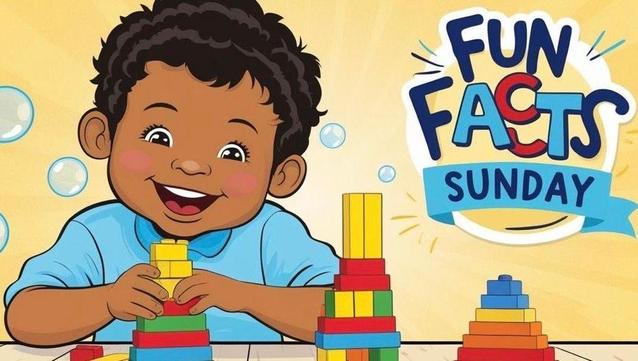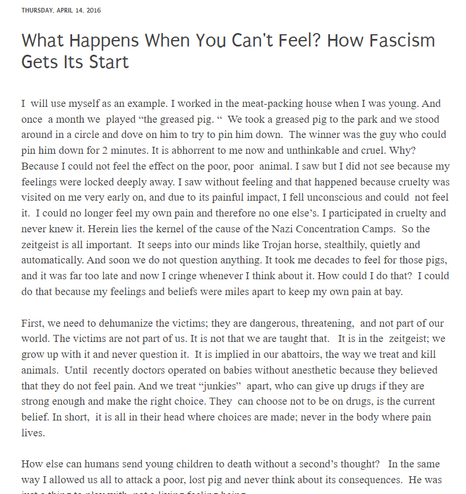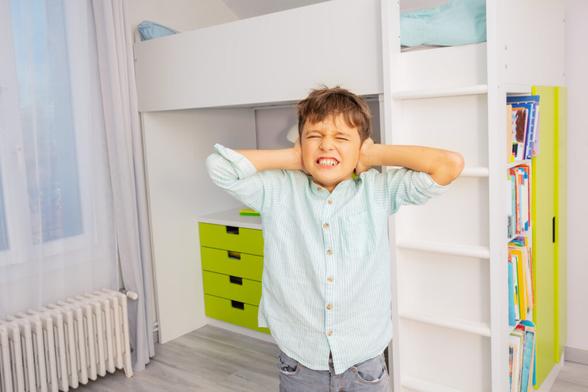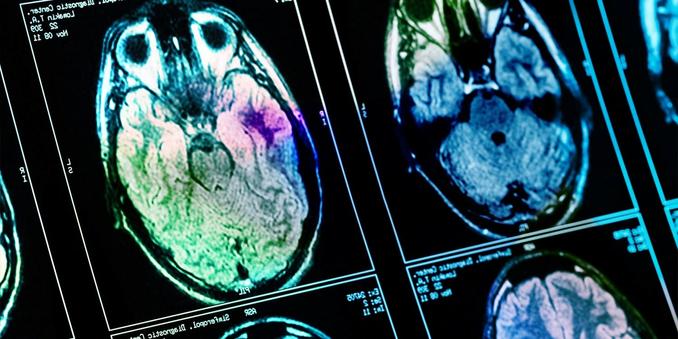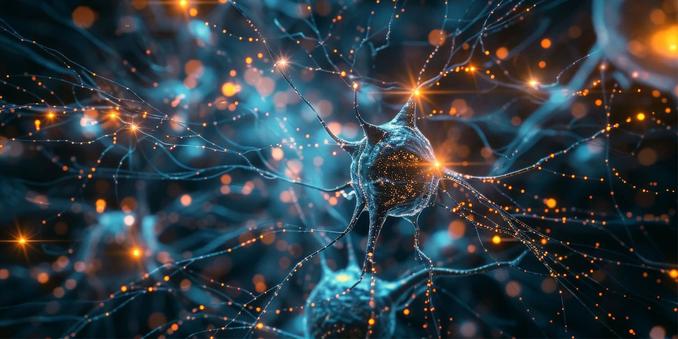🧠 Evidence-based insights: How riddles support healthy brain development in children.
Essential reading for parents, educators, and anyone interested in child psychology and cognitive development.
Science-backed brain building: https://riddlesquest.com/why-riddles-are-important-kids-mental-development/
#ChildDevelopment #ParentingScience #BrainDevelopment #EducationalPsychology #CognitiveDevelopment #ParentingTips
#BrainDevelopment
Left- or mixed-handed? New research links non-right-handedness to early-onset neurological disorders like autism and dyslexia. #Handedness #NeurologicalResearch #BrainDevelopment
https://geekoo.news/left-handedness-linked-to-early-onset-neurological-disorders/
How A2 Ghee Benefits Children’s Health
https://www.reachingworld.live/how-a2-ghee-benefits-childrens-health/
#Food #Health #A2BilonaGhee #A2Ghee #BrainDevelopment #Children #ChildrenHealth #DigestiveHealth #ImmuneBoosting #Thyroid #WeightGain
Letting teens sleep longer may be the key to unlocking sharper minds and healthier brains. Find out why sleep matters more than ever. #TeenHealth #BrainDevelopment #SleepMatters
https://geekoo.news/more-sleep-sharper-mind-the-secret-to-teen-brain-power/
Science confirms what teens have been saying: they need more sleep! New study reveals even small sleep gains boost brain power, but none hit recommended levels. Your teen's late-night gaming might not be the problem after all.
https://hecknews.com/teen-sleep-patterns-brain-function-study
Brain scans of infants reveal the moment we start making memories - A team from Columbia and Yale University scanned the brains of 26 infants and toddlers aged 4 to 25 months as they completed a memory task. They found that at roughly a year old, a part of the brain crucial to memory formation spun into action and began generating neural signals related to things the kids remembered from the tests. #memory #brain #physiology #BrainDevelopment #thinking #ChildGrowthAndDevelopment #consciousness
https://singularityhub.com/2025/03/20/new-baby-brain-scans-reveal-the-moment-we-start-making-memories/
Kids vs.Adults Brainpower🧠📌Fun Fact: A child’s brain grows twice as fast as an adult’s brain! 🤯.That explains why they can learn a new language in a few months, but we forget why we walked into a room.😂👀 #ParentLife #SmartKids #iamsmartscool #earlylearning #braindevelopment
Scientists discover babies form memories, even if they can't recall them later! 🤱🧠 New brain scans reveal the hippocampus encodes early experiences, but they remain inaccessible in adulthood 📚💭 #InfantMemories #BrainDevelopment #MemoryFormation #newz
From Zygote to Neurocircuitry: The Marvelous Journey of Brain Development
#BrainDevelopment #Neuroscience #CognitiveEmotions #NatureVsNurture #SensoryInput #Neurocircuitry #ChildDevelopment #HumanGrowth #Psychology #LearningJourney #NeuroscienceEducation #VisualSystem #AuditoryProcessing #EmotionalIntelligence
zur gefälligen Info 😎 😀 🙏 #wepray
Janov's Reflections on the Human Condition: The Simple Truth is Revolutionary
Articles on #PrimalTherapy, #psychogenesis, causes of #psychologicaltraumas, #braindevelopment, #psychotherapies, #neuropsychology, #neuropsychotherapy. Discussions about causes of #anxiety, #depression, #psychosis, consequences of the #birthtrauma and #lifebeforebirth.
#CRISPR_rEvolution #Hanfgeschichten #Epigenetik #Janov #FridaysFORfuture #Demokratie #Therapie
Pregnancy reshapes the brain: Study reveals gray matter changes linked to hormones and bonding https://www.psypost.org/pregnancy-reshapes-the-brain-study-reveals-gray-matter-changes-linked-to-hormones-and-bonding/?utm_source=dlvr.it&utm_medium=mastodon #Pregnancy #MaternalHealth #BrainDevelopment #Hormones #MentalHealth
8 Ways Stimming Calms Your Child’s Nervous System
Photo by serrnovik on Deposit PhotosWe all stim. We all fidget, tap, sway or move in a way that provide some sort of relaxation or stimulation. From chewing on pencils, clicking a pen, tapping feet, cracking knuckles, twirling hair, or swaying side to side, many children and adults display these behaviors.
Stimming, according to The Cleveland Clinic, is self-stimulatory behavior and is identified by its repetitive movements and/or vocalizations.
These behaviors and vocalizations serve a purpose. Typically, stimming behaviors occur to help with emotional regulation or to self-soothe in some way. Stimming is often associated with autism, ADHD, sensory processing, or other neurodevelopmental conditions, but anyone can engage in stimming behaviors. For kids diagnosed with autism, these are often unconscious and unintentional. This may not always be the case, but oftentimes, those on the spectrum have a harder time managing stims.
Kids are likely to engage in stimming behaviors. Their brains are not yet fully developed, their attention span is minimal, and they are biologically wired to explore and move their bodies. It is common to see kids tapping or shaking their legs, fidgeting, or losing focus easily.
For those on the spectrum, stimming behaviors such as hand clapping, pacing, rocking, vocalizations, and flapping hands or fingers might be more pronounced.
Often, it is associated negatively, and adults can sometimes be quick to judge or shut down these behaviors. They may view these kids as not listening, hyperactive or defiant. However, stimming functions quite the opposite. Stimming can help a child focus, emotionally regulate, and self-soothe.
Trying to understand the purpose of the stim is important. Behavior is communication, and understanding the function behind the stim can help parents better understand the stim and how it can help calm a child’s nervous system.
Emotional Regulation And Stimming
Photo by Lenanichizhenova on Deposit PhotosKids do not yet know how to regulate their emotions. Their brain is not formed enough to do so yet. They are learning to build skills to help manage big feelings. Often, stimming behaviors function to help kids regulate and calm down. Entering new situations, making quick changes in routine, managing frustration, or experiencing sadness can all trigger a child to engage in a repetitive situation to help manage the emotion.
The Cleveland Clinic referenced one study of adults with autism who reported emotional regulation as a reason for stimming, noting that 72% said it’s a helpful coping mechanism for dealing with anxiety, 57% for overstimulation, and 69% to calm down. If stimming is useful for adults with a fully formed brain, it is easy to understand why stimming is useful for children to assist with emotional regulation.
Enjoyment And Excitement
Photo by HayDmitriy on Deposit PhotosJust as stimming can help a child regulate big feelings, those feelings may also take the form of excitement, happiness, and enjoyment. Some kids may react intensely to excitement such as repetitively jumping up and down, hand flapping, hand clapping or different vocalizations to express their emotions.
See also A Museum Had An Amazing Response After A Toddler Destroyed A 3,500-Year-Old ArtifactSome find physical closeness helpful, and you may notice a child wanting to give multiple hugs or keep a tight grip on hugging you for an extended time. In one study noted by The Cleveland Clinic, 80% of people said they like the way stimming makes them feel and do not necessarily have a reason behind the stim. It just feels good!
Focus And Concentration
Photo by Vejaa on Deposit PhotosFrom an outside perspective, a child moving around and fidgeting in their seat or while studying may be viewed as distracted or not listening. However, some children often need these movements to calm their nervous system and focus. For some, simply sitting still drives their distraction and fuels the need to move. This is often referred to as “fidget to focus.”
As noted by CHAAD, researchers found that “increased movement seen in the children with ADHD, often labeled as hyperactivity, is a way for these children to unconsciously compensate for under arousal or under activity in some brain regions commonly associated with ADHD.”
Sensory Seeking Can Be Helped With Stimming
Photo by Xalanx on Deposit PhotosStimming can help with sensory stimulation, which, in turn, helps kids regulate their nervous systems. According to Autism Speaks, those with autism “ use stimming as a form of sensory seeking to keep their sensory systems in balance. Repetitive movements, sounds, or fidgeting can help autistic people stay calm, relieve stress, or block out uncomfortable sensory input.”
Sensory seekers are referred to as hyposensitive as they have a decreased sensitivity to sensory stimuli. They often look for more physical movement and more sensory stimulation. Sensory seeking can help regulate an “overloaded system” and help kids feel more organized.
Stimming by rocking, jumping, spinning objects, fidgeting with different textures or items, tapping, staring at things that move, chewing, sniffing, humming, or making different sounds can help kids calm their nervous system through sensory stimulation.
Sensory Avoidance And What To Look For In Children
Photo by NewAfrica on Deposit PhotosSensory avoidance functions to escape from sensory stimuli. Kids who are sensory avoiders are sometimes more prone to sensory overload or “meltdowns” since they respond to sensory input more intensely. This can trigger a feeling of being overwhelmed or overstimulated.
Sensory avoidance may look like being easily startled by sounds, responding intensely to being touched, or having strong reactions to certain types of lighting.
Stimming may take the form of covering ears, pulling away, turning or moving their body away from stimuli, closing eyes, avoiding physical touch or certain textures, loud vocalizations, or yelling, for example. The purpose behind these behaviors is to help regulate and avoid the sensory input. Most sensory avoiders are oversensitive and are referred to hypersensitivity. They experience sensory input more intensely than the average person, and they avoid it because it overwhelms them.
See also Four Parenting Choices That MatterStress And Stimming
Photo by kmiragaya on Deposit PhotosAs we have mentioned, stimming can take the form of helping regulate if one is feeling overwhelmed or overstimulated or managing emotions. These same stimming behaviors may be present to help with stressful situations.
Some examples of stress for kids may include entering new situations, being in large crowds, changes in routine, testing, changes in caretakers (such as a new teacher or new babysitter), or in times of conflict or disagreement. Even something that may seem enjoyable, such as visiting family, traveling, or birthday parties, can be stressful to a child.
Stimming behaviors may also be used to help manage traumatic stress. Big life events or traumas such as abuse, divorce, natural disasters, moving, domestic violence, or the death of a pet or family member may likely trigger self-stimulating behaviors used to regulate nervous system responses.
Self-Soothing And Stimming
Photo by bondarillia on Deposit PhotosStimming can help a child with self-regulation skills. Stimming allows the child to have an outlet for the energy they are feeling. For example, the physical release of jumping or rocking, or soothing through smells or touching certain objects, provides the child an opportunity to practice self-soothing and coping and understand their emotional responses.
If trying to avoid stimming for too long, it can trigger a feeling of overwhelm that may “back fire.” Stimming provides an opportunity to regulate the nervous system through these self-stimulating behaviors.
If there is an upsetting event or situation, it can trigger the fight, flight or freeze response in our brain. The repetitive stimming behavior helps activate our parasympathetic system, known as the “rest and digest” system, which provides a calming and self-soothing response. The stimming behaviors can help reduce stress, give a sense of control, and bring a feeling of calm.
Pain Management And Stimming Behaviors In Children
Photo by IgorVetushko on Deposit PhotosSome kids use stimming behaviors to help regulate their responses to pain. A child may respond intensely to a scrape or a bruise and use stimming to help emotionally regulate. Stimming may also be in response to chronic medical conditions or pain from headaches, migraines, or ear infections.
Some more pronounced and severe forms of stimming may include head banging. This may be more commonly seen with kids on the spectrum.
According to The Warren Center, “children with autism may bang their heads to reduce an overall sensation of pain. Scientists also theorize that stimming releases endorphins as a mild form of internal pain relief.” The Child Mind Institute further reinforces “Repeated banging of the head or body actually reduces the overall sensation of pain. One hypothesis is that stimming causes the release of beta-endorphins in the body, which then causes a feeling of anesthesia or pleasure.”
See also Sleep-Deprived Kids At Higher Risk For Suicidal Thoughts, Study ShowsUnderstanding The Stim
Photo by szefei on Deposit PhotosSome forms of stimming behaviors may cause self-harm. Some children may engage in hair pulling, head banging, or slapping themselves. It is helpful to understand the reasoning behind this. Often, the intention is not to harm self, but is used to manage emotions.
Some stims that may present more extreme can interfere with functioning, social interactions, or academic learning. It certainly is beneficial to discuss any concerns with your doctor, therapist, or other professionals who can provide support, especially if there are safety concerns.
Whatever the stim, taking a deeper dive in exploring the function underneath the behavior can help your response and understanding. As noted by the Child Mind Institute, the question is not how do I stop the stim but why does my child engage in this behavior. Exploring the benefits for your child and assisting them in verbalizing this can help them understand it better. If a child is nonverbal, take note of when the stim occurs. Is it often in response to specific sounds or when certain textures are introduced? Maybe you notice it appears when in large crowds.
Keep track of the triggers and other influencing factors. If you are aware of the triggers, you may be able to support your child better and help reduce anxiety-provoking or overstimulating environments.
Ways to Help Your Child With Stimming
Photo by monkeybusiness on Deposit PhotosEngaging your child in games, turn-taking activities, exercise, or physical movement may help manage the stimming behaviors. Offering replacement behaviors might also prove to be helpful if the stimming is unsafe or interferes too much with day-to-day functioning. Certain fidget toys, such as chewing necklaces, picking toys, pop-its, or other fidgets, may provide an outlet for your child. Having a routine and structure may also help your child manage emotions, reducing the need to stim.
You may consider joining your child in the stim if the behavior is not harmful. Mimicking their behavior as a way of connecting, reflection, and validation may allow your child to feel seen, heard, and understood.
Consult with your doctor or healthcare provider to dig deeper into your child’s world and to rule out any medical issues or conditions that may be present. Referrals to a Board Certified Behavioral Therapist, Occupational or Speech Therapist, or other interventions may be necessary or appropriate.
Best Fruits to Eat During Pregnancy for Brain Development 🍓👶
"Top 10 Fruits for Baby Brain Development During Pregnancy 🍎🍌 Eating the right fruits during pregnancy helps boost your baby's brain health! 🧠✨ Discover the best fruits that support your baby’s development. 🌿💚
Read the full article, click here!
👉 https://babyblinkup.com/fruits-for-baby-brain-development-during-pregnancy/
Newborn brains reveal innate ability to process complex sound patterns https://www.psypost.org/newborn-brains-reveal-innate-ability-to-process-complex-sound-patterns/?utm_source=dlvr.it&utm_medium=mastodon #Newborns #BrainDevelopment #CognitiveScience #AuditoryProcessing #InfantResearch
Former #CDC Director: “[A] legitimate question” has been raised about whether #fluoride affects #BrainDevelopment, and studies making that link “need to be looked at carefully.” Especially since there are other common sources for it. #PublicHealth #Dentistry https://apnews.com/article/fluoride-water-kennedy-cdc-47a0067edb128dbd9b9211a36e674b2c
Childhood adversity may blunt brain development rather than speed it up https://www.psypost.org/childhood-adversity-may-blunt-brain-development-rather-than-speed-it-up/?utm_source=dlvr.it&utm_medium=mastodon #ChildhoodAdversity #BrainDevelopment #FamilyStressors #HarshParenting #UnsafeNeighborhoods
Scientists reveal the disturbing impact of sleep disruption on the developing brain https://www.psypost.org/scientists-reveal-the-disturbing-impact-of-sleep-disruption-on-the-developing-brain/?utm_source=dlvr.it&utm_medium=mastodon #SleepDisruption #BrainDevelopment #CognitiveImpairments #SleepDeprivation #BrainStructures
When blind faith in false beliefs makes you see things that aren't there
https://tube.xy-space.de/w/qj2WXzuLJRNqwQ2uFRHdC2
#RespectYoungAdults #Neurology #teens #teenagers #rights #respect #YoungAdults #puberty #adolescence #Puritan #SexPhobic #Tradition #SexPhobia #StopTheHysteria #StopTheHate #brains #BrainDevelopment #SexualDevelopment #Evolution #Logic #Maladaptive #deficient #BodilyAutonomy #Agency #DeficientBrains #Undeveloped #FrontalLobe #PrefrontalCortex #Biology #Discrimination
*O'Hara echoed the need for residential placement for young offenders at a Friday afternoon press conference.
"We've noticed this year the age of juvenile offenders who are very active has gotten younger," O'Hara said. "The system doesn't have an answer for what to do with someone this young."*
A cursory glance at reporting states says the #PandemicKids might be in trouble.

